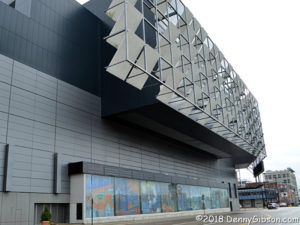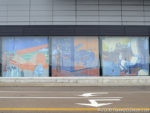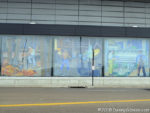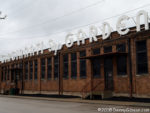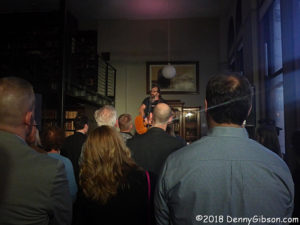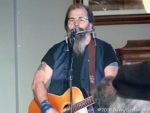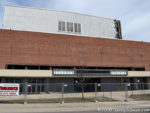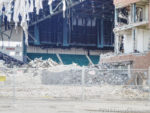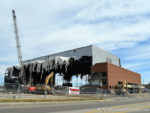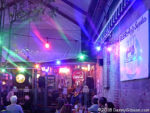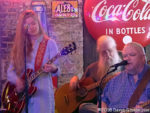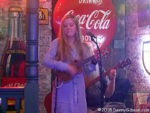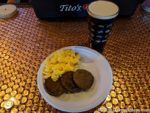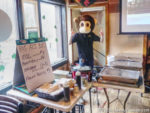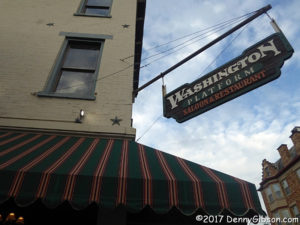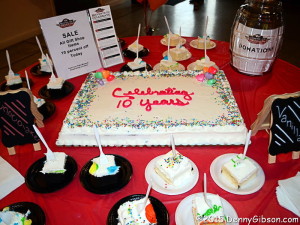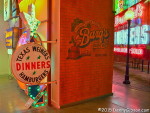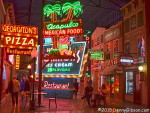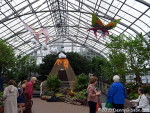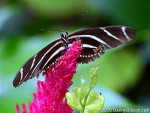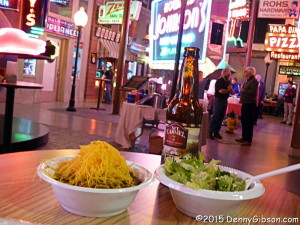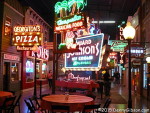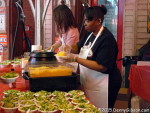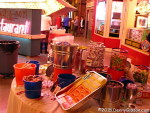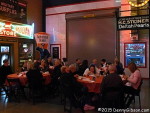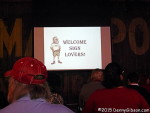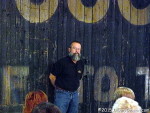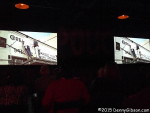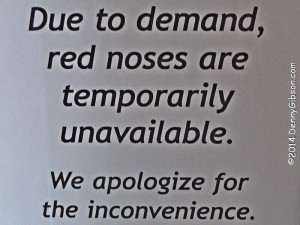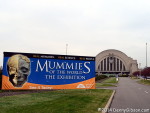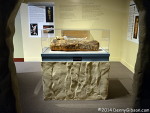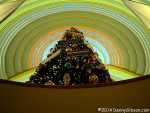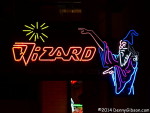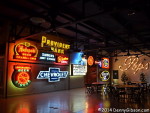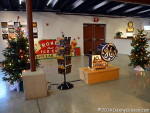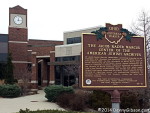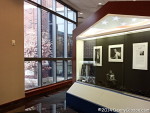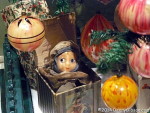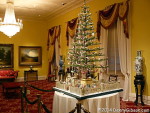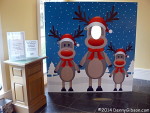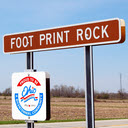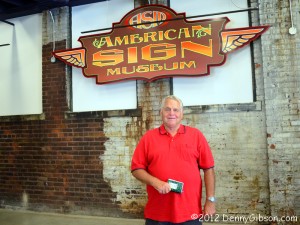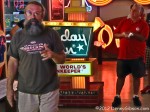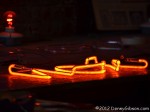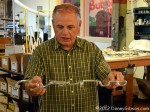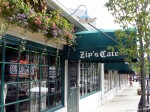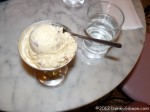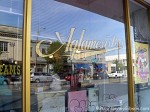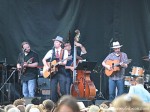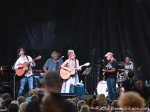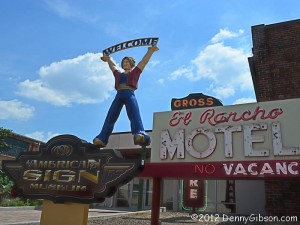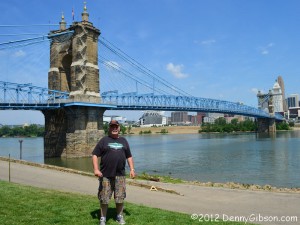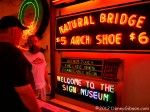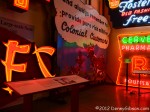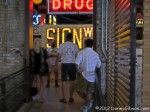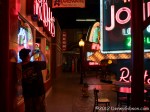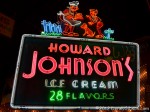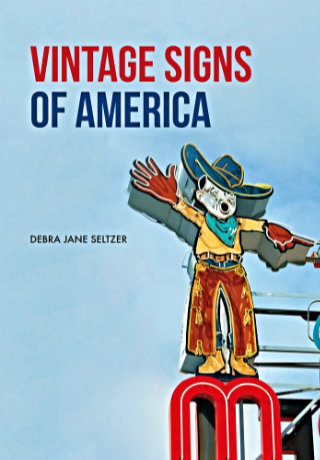 I photograph a fair number of signs as I travel, and I know quite a few people who photograph many more than I. Not one, however, is in the same league as Debra Jane Seltzer. If sign hunting was an Olympic sport, the petite Seltzer would be buried under gold medals. Her photo expeditions are legendary. Until recently, when she and her dogs (currently four) headed out in the white Chevy van named Sparkle, they would take along a big stack of notes and marked up map printouts. Today there might still be a printed list of targets but Google maps and a smartphone have reduced the need for paper considerably. The target list is never limited to signs. It’s almost certain to include interesting buildings and other roadside attractions of all sorts.
I photograph a fair number of signs as I travel, and I know quite a few people who photograph many more than I. Not one, however, is in the same league as Debra Jane Seltzer. If sign hunting was an Olympic sport, the petite Seltzer would be buried under gold medals. Her photo expeditions are legendary. Until recently, when she and her dogs (currently four) headed out in the white Chevy van named Sparkle, they would take along a big stack of notes and marked up map printouts. Today there might still be a printed list of targets but Google maps and a smartphone have reduced the need for paper considerably. The target list is never limited to signs. It’s almost certain to include interesting buildings and other roadside attractions of all sorts.
Seltzer’s website, Roadside Architecture, is the primary beneficiary of these expeditions. It currently contains more than 60,000 searchable photos organized by subject and location. It’s described as “Buildings, signs, statues, and more”. Photos are added and other maintenance is performed between trips. While traveling, Seltzer maintains a blog with stories and pictures from the road and a Flickr account with pictures that didn’t appear in the blog and probably won’t make it to the website. Links to these and more can be found at the Roadside Architecture website.
So why a book? Even though the subject matter of the structured website, the blog, and the Flickr account is essentially the same, they have different uses and different audiences. A book’s audience is different yet. In reading the book, I spotted a couple of signs that could be within range of upcoming travels. As I put them on my own list, I realized that the book could be used as a “shopping list” for travelers. The website, of course, is a super shopping list and both the blog and Flickr can can be sources of things to see, but the printed page is consumed differently and if the book gave me some ideas I’m sure it can do that for others.
However, before I thought of Vintage Signs of America as a shopping list, I thought of it as a primer. There is a one page introduction which, in addition to providing an overview of the rest of the book, offers a little insight into why Seltzer likes signs and why you might, too. This introduction page and a few near the book’s end where the subject is preservation are the only pictureless pages in the book. The other pages are filled with roughly 175 color photographs divided into five chapters. The first of these, “Types of Signs”, is where I got the idea of the book as a primer. Examples of bulb, opal letter, mechanical, and other types of signs appear with descriptive text. It prepares the reader for recognizing the various types in the wild and also provides a little history of advertising and the sign industry.
The next three chapters form what Selzer refers to as the “theme” section of the book. One chapter focuses on “People” with sub-themes like chefs, women, cowboys, and Indians. I was a little surprised with the statement that “There are far fewer representations of women than men on surviving vintage signs”, and considered why that was so. For starters, most of those chefs, cowboys, and Indians are male. The neon women my male mind first thought of were bathing beauties diving into motel swimming pools. Women are portrayed in other roles but not often. Evidence, I suppose, of women being even more underrepresented in the ’40s , ’50s, and ’60s, when most of these signs were made, than today.
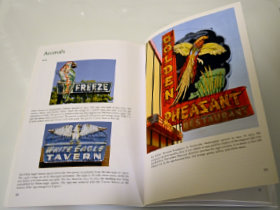 The “Animals” chapter is probably my favorite. Colorful birds, fish, and dogs draw customers to businesses of all sorts. Sequenced neon segments can make birds appear to fly and dogs and horses appear to run. A pig almost always indicates a BBQ restaurant although one sign shows a line of pigs merrily leaping in to a grinder to be made into sausage.
The “Animals” chapter is probably my favorite. Colorful birds, fish, and dogs draw customers to businesses of all sorts. Sequenced neon segments can make birds appear to fly and dogs and horses appear to run. A pig almost always indicates a BBQ restaurant although one sign shows a line of pigs merrily leaping in to a grinder to be made into sausage.
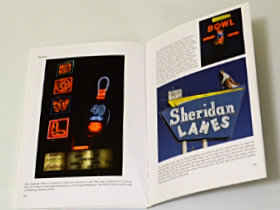 “Things” is as varied as you might imagine. Bowling balls and pins are popular as are skates, cars, and assorted food items. Donuts and ice cream cones seem to be the most common edibles used to attract customers. Bowling balls lend themselves to animation and when a neon bowling ball rolls, a strike is virtually guaranteed. Together, “Types of Signs” and the three chapters of the “theme” section make up a sort of sampler of the massive Roadside Architecture site. Picking less than 200 images to populate this sampler had to be tough but the choices made were excellent.
“Things” is as varied as you might imagine. Bowling balls and pins are popular as are skates, cars, and assorted food items. Donuts and ice cream cones seem to be the most common edibles used to attract customers. Bowling balls lend themselves to animation and when a neon bowling ball rolls, a strike is virtually guaranteed. Together, “Types of Signs” and the three chapters of the “theme” section make up a sort of sampler of the massive Roadside Architecture site. Picking less than 200 images to populate this sampler had to be tough but the choices made were excellent.
Like the signs themselves, the color photographs snag a reader’s attention. They’re all good eye-candy and some, like those with running animals, flying footballs, or operating machinery, require some amount of study. The pictures are far from alone, however. Every picture has an extended caption that describes the sign, often tells its history, and sometimes includes more general information. As Seltzer tells it, “I snuck facts and history into captions which makes it easier to swallow.” Easy to swallow describes the whole book. Even though it may look like a picture book, it seems quite natural to read it front to back and absorb those “facts and history” along with the images.
The last chapter, “Preserving Vintage Signs”, has those pictureless pages I mentioned earlier. It begins with a couple of pages of text that is sort of a “state of the signs” message. Here Seltzer tells of what has been happening to signs and why. The last page is also all text with some answers to the question “What can I do?” In between are descriptions, with pictures, of the big three sign museums in the country: The American Sign Museum (where I bought my copy of the book) in Cincinnati, OH, the Museum of Neon Art in Glendale, CA, and the Neon Museum in Las Vegas, NV. The whole chapter, and the final page in particular, might just be the inspiration someone needs to get involved is saving or documenting vintage signs.
So I’m thinking that some folks will get inspiration from this book, some will use it as a shopping list for their own sign hunting, for some it will be an introductory primer into the world of signs, and others might see it as a sampler of the full Roadside Architecture web presence. Those are all valid uses for the book and it will satisfy all of them quite nicely. Of course, some might see the book purely as a nice presentation of some very pretty pictures. There’s certainly nothing wrong with that. With the few exceptions noted, there are pretty pictures on every page.
Vintage Signs of America, Debra Jane Seltzer, Amberley Publishing, April 1, 2018, 9.2 x 6.5 inches, 96 pages, ISBN 978-1445669489
Available through Amazon.

